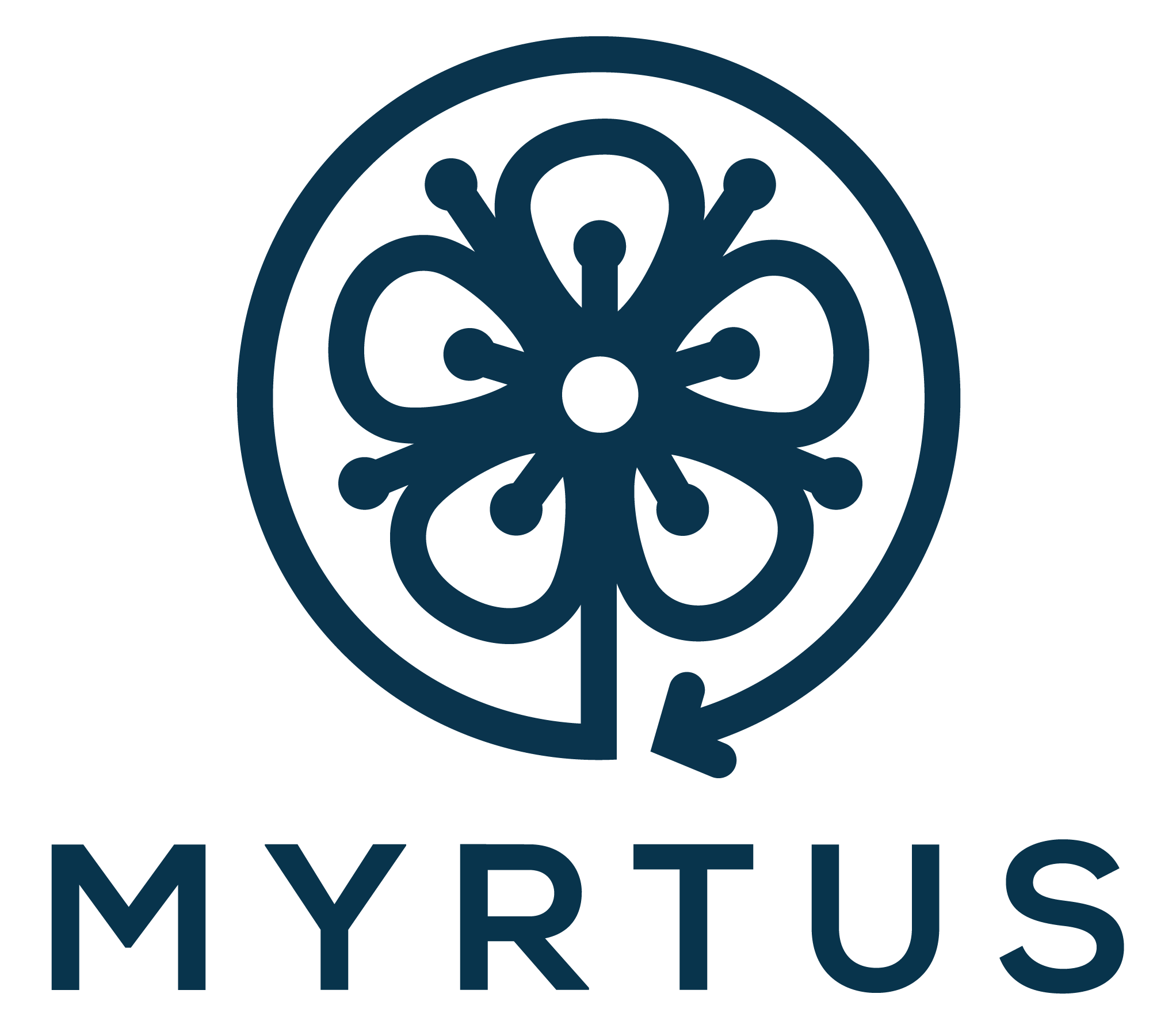 MYRTUS – Multi-layer 360 dYnamic orchestration and interopeRable design environmenT for compute-continUum Systems
MYRTUS – Multi-layer 360 dYnamic orchestration and interopeRable design environmenT for compute-continUum Systems
Website: https://myrtus-project.eu/
Linkedin: https://www.linkedin.com/company/myrtus-eu/
The MYRTUS project aims at unlocking the new living dimension of CPS, embracing the principles of the EU CloudEdgeIOT Initiative, integrating edge, fog and cloud computing platforms. This integration requires the reinvention of programming languages and tools to orchestrate collaborative distributed and decentralised components. Additionally, components must be augmented with interface contracts covering both functional and non-functional properties. MYRTUS solutions play a crucial role in enabling sustainable computing and trustworthiness in CPS.
MYRTUS contributes to create new knowledge in the computing continuum domain, with methodologies and tools for node execution and processing portability over edge-fog-cloud, including dynamic and seamless orchestration. The goal is to become a reference in the computing continuum, offering solutions that overcome the problem related to vendor/platform lock-in, therefore promoting and facilitating the adoption of MYRTUS technologies among startups and SMEs, reducing their development time and cost.
MYRTUS embraces the sustainable and responsible computing paradigm, promoting obsolescence avoidance (supported by MYRTUS principle of openness, interoperability, and portability) and resource saving and energy efficiency (supported by HW specialisation and optimization techniques).
Scope: Horizon Europe
Role: Scientific Coordination
Responsible: Francesca Palumbo, francesca.palumbo@unica.it
 TURNTABLE – Platform supporting vitality and abilities of elderly
TURNTABLE – Platform supporting vitality and abilities of elderly
Website: http://turntable.abinsula.com/
Twitter account: @turntable_aal
The project aims to develop a platform to support healthy living (activity and diet) and social inclusion among older adults, prolonging autonomy, independence and quality-of-life.
As people age, they tend to become more sedentary and less active. This worsens normal age-related decline in both physical and cognitive function. There is a decline in muscle mass, strength and power, falls become more frequent and harmful, and everyday tasks become more difficult and intimidating. These issues can also interfere with maintenance of a healthy diet and good nutritional status, which contributes to physical and mental decline, as well as participation in social activities.
The TURNTABLE platform will supports and motivate older adults to maintain or re-adopt healthy eating habits, by providing personalised dietary recommendations, and assist older adults in remaining active, through recreational social agriculture/ gardening, growing food to eat, reducing feelings of isolation, acquiring new skills, and enjoying outdoor spaces.
Scope: Project co-funded by the AAL Joint Program (Ref. AAL-2018-5-163-CP) and the National Authorities and R&D programs in Italy, Belgium, Portugal and Hungary.
Role: Project partner
Task: Planning, organization and implementation of co-creation sessions and execution of a field trial in Cagliari (Italy), analysis of the results.
Responsible: Luigi Raffo, EOLAB – Università di Cagliari, raffo@unica.it
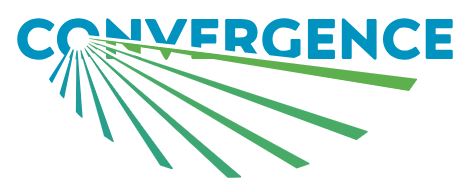 CONVERGENCE: Frictionless Energy Efficient Convergent Wearables for Healthcare and Lifestyle Applications
CONVERGENCE: Frictionless Energy Efficient Convergent Wearables for Healthcare and Lifestyle Applications
Website: https://convergence-era.org/
The CONVERGENCE project aims to develop energy efficient sensor networks for future use on wearable devices.
The latter exploit the convergence of multiparametric biosensors and environmental sensors on an autonomous technological platform, able to respond to the need for autonomy in almost continuous data collection. This platform will allow you to benefit from new strategies in the field of prevention and health care.
To do this, the CONVERGENCE project connects research institutes and users, at European level, combining national resources and skills, with the interaction of multidisciplinary teams.
The decision to focus on wearable devices for prevention is due to the fact that health and care services have failed to keep pace with demographic change and lifestyle-related diseases. Given the strong pressure on the health care system, a solution could be to “shift the curve” from high-cost, reactive and based care to preventive and proactive care with the help of energy-efficient wearable technologies.
These systems will surely become part of the Internet of Things (IoT) with services related to the improvement of the quality of life and/or a change of paradigm in medical-health monitoring. Recently, this concept has emerged in the so-called Internet-of-Everything (IoE), a very significant term to describe the addition of connectivity and intelligence to almost all devices.
In the approach proposed by the project, part of the processing and archiving of information could be local, while another part is saved in the cloud, depending on the application scenario, with particular attention to the level of privacy and data security.
Following the collection and analysis of data, the systems developed during the CONVERGENCE project should allow personalized advice and assistance, offering unique solutions in non-invasive health applications and continuous monitoring. In the long term, they should form the basis of future human-machine interfaces.
Role: partner
Scope: Convergence is funded by the ERA-NET – a H2020 instrument, designed to support public-public partnerships in their preparation, establishment of networking structures, design, implementation and coordination of joint activities as well as topping up of single joint calls and of actions of a transnational nature.
Period of reference: 2018 – 2021
Scientific supervisor: Danilo Pani, PhD, University of Cagliari, pani@unica.it
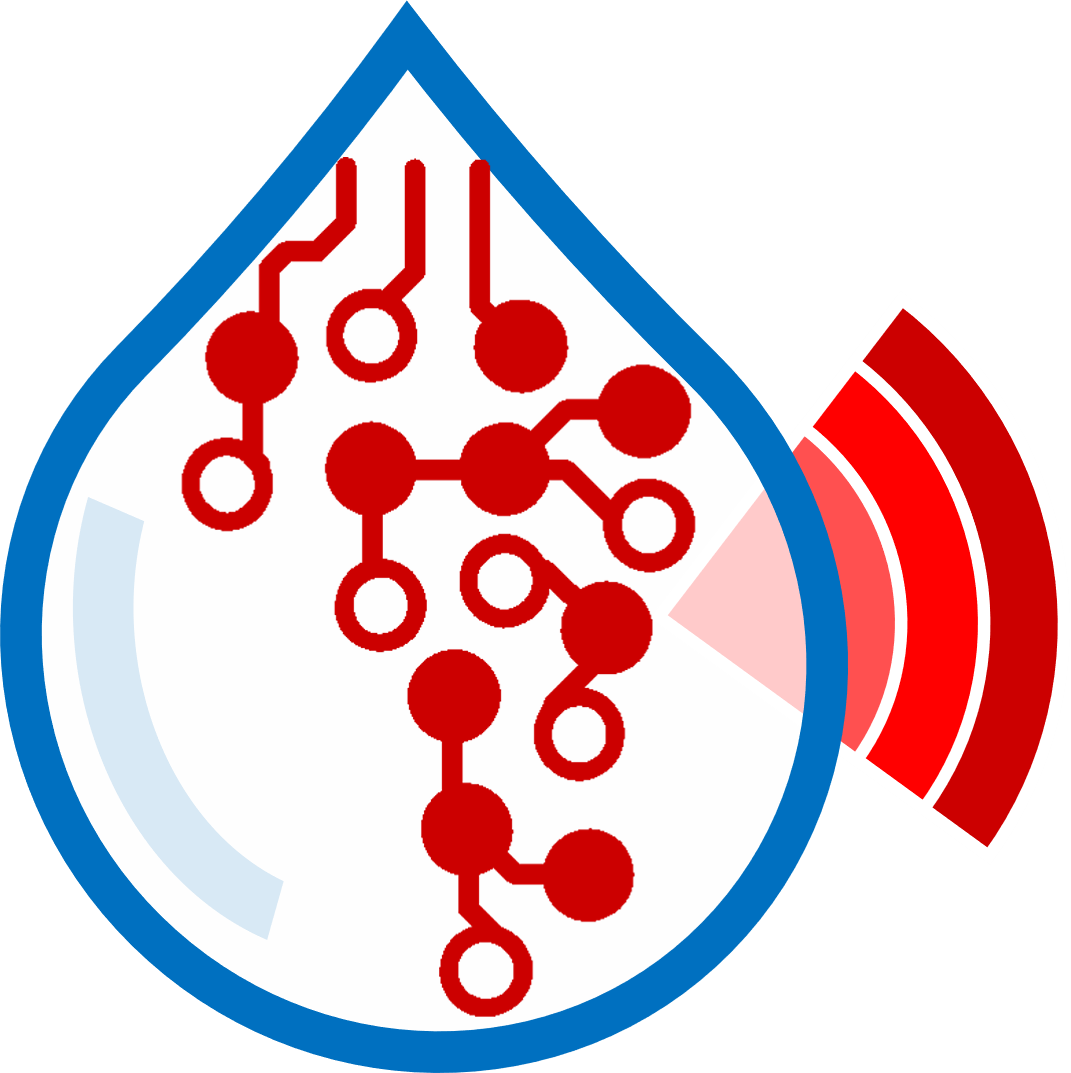
ACUADORI: ICT platform for sustainable water management for quality wine production
Website: acuadori.net
The ACUADORI project aims to develop an innovative strategy to improve the management of water resources in Sardinia’s wine production. The project is considered in an area where wine production is the first item of turnover, with a significant increase in production quality in recent years, in parallel with the attention to environmental sustainability.
Within the various platforms of the Internet of Things paradigm already proposed to meet the needs of Precision Farming and water management, ACUADORI aims to innovate the common approaches through a platform able to transform the plant itself into a biosensor and interrogate its real water needs and its response to irrigation.
This platform will be characterized by ease of use, low cost, minimum impact on normal agricultural activities, minimum or nulle maintenance requirements; moreover it will consist of wireless devices, very low consumption, able to operate continuously for different seasonal cycles without requiring intervention by specialized operators.
The main specific goal of the project is to integrate different skills and methodologies to offer an innovative path useful to the wine producer, as a valid decision support, to optimize the qualitative and economic yield of the crop and at the same time achieve new goals in terms of business efficiency and environmental sustainability.
In line with the goal of correctly implementing the practice of Deficit Irrigation, the applied methodology will allow to obtain real-time and non-invasive data on the weather conditions and the water stress of the vineyard.
A particular element of innovation is the immediate availability of information based on the processing of the data obtained; such detailed, high-level information, extracted from unprocessed data from the agronomic models implemented in the system, will be shown through a user-friendly interface.
To provide a quantification of the expected results, the platform that will be developed during the project could raise at least 90% the automation level of the water evaluation of the vineyard, reducing the hours of manual work necessary for monitoring the water status, compared to the current state of the process, equal to at least one order of magnitude.
Compared to the ACUADORI platform, none of the IoT approaches previously used in the Precision Agricolture (or Farming, more generally), applied to the management of water resources, uses new detection technologies such as those indicated.
Role: Scientific Coordinator
Scope: POR FESR Sardinia 2014-2020 – Axis I – Scientific Research, Technological Development and Innovation
Action 1.2.2 – Support for the implementation of complex research and development projects on important thematic areas and the application of technological solutions functional to the implementation of S3 strategies
Period of reference: 2018 – 2021
Scientific supervisor: prof. Massimo Barbaro, associate professor, University of Cagliari, barbaro@unica.it
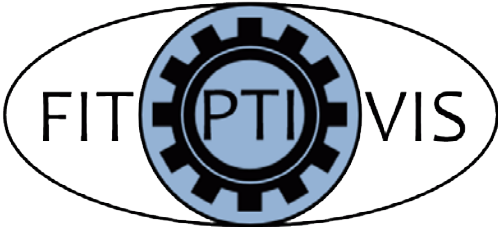
FitOptivis – From the cloud to the edge – smart IntegraTion and OPtimization Technologies for highly efficient Image and VIdeo processing Systems
Website: http://fitoptivis.eu/
The central theme and goal of the FitOptiVis project is searching for new methods and strategies for the analysis of images and video in Cyber Physical systems, which make up one of the KETs (Key Enabling Technology) of innovation.
Into FitOptivis, EOLAB has developed a reference architecture, placing the validation of the project on a water supply system in which there are: an aquifer (in which the source is accessible through an inspection well), an aqueduct (mostly underground and with some inspection wells) and a distribution tank.
In such systems, the interaction between different components is fundamental, giving particular emphasis to multisectoral applications and to the reduction of energy consumption, improving the performance.
Water supply systems are infrastructures that present security vulnerabilities, and are monitored with chemical or pressure sensors but not with cameras. This is why FitOptivis proposes an evolutionary strategy in access regulation using a control through facial recognition and analysis of the behavior of people in the vicinity of the distribution lines. The sensors and the devices used, such as drones, also allow to avoid the waste of resources and to protect the safety of operators who can avoid direct access to remote areas.
FitOptivis – realizing data analysis in real time – would allow to obtain better performance in the action-event mechanisms, avoiding false alarms due to weather conditions detected by the systems in vogue.
The platform is designed to facilitate the verticalization of instruments in various physical implementations, always finding a link between high performance, low power consumption and implemented features.
Role: partner
Scope: European project
Period of reference: june 2018 – june 2021
Scientific supervisor: prof. Luigi Raffo, professor, University of Cagliari, raffo@unica.it
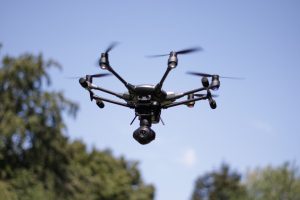
API: Intelligent Remote Piloting Aircraft for environmental monitoring
Website:
The API project is based on an innovative platform that employs remotely piloted aircraft (drones) in order to monitor areas at risk such as assemblies and critical areas such as aqueducts, power plants and nuclear power plants. API takes a step forward compared to the state of the art as it introduces a monitoring system that uses a fleet of mini-UAVs controlled through artificial intelligence algorithms.
The fundamental objective is the autonomous processing of relevant information on environmental safety, with an artificial intelligence system and hardware with low energy consumption.
To achieve the objective, the platform uses a series of small and low-cost drones, in communication with a base station, according to an IoT system in which distributed intelligence is the main factor of innovation.
The sensors used are of two types: optical or infrared sensors to obtain HD images and electromagnetic sensors that can provide information even in critical conditions such as fires or fog that reduce the efficiency of optical sensors. In this way it is possible to obtain a control of the dynamic mission, able to adapt to situations of different entity and degree of danger.
The drone fleet sends in real time to the ground station only the relevant information, in order to avoid the use of memory and power due to the storage of high resolution images that would not be useful. Data integration and merging systems and intelligent operational coordination systems enable the immediate intervention of an operator in emergencies.
The impact of the introduction of this technology is evidenced by the growing attention of the industry towards Smart Things in the civil sphere. The API project, developed at the headquarters of Nurjana Technologies, fits in with a view to integrating the university education to the Sardinian territorial development with important effects on employment. It is also in line with the European Data Information Access Services (DIAS) initiative, which aims to facilitate the use of satellite images.
Role: partner
Scope: cluster project POR FESR Sardinia 2014-2020 – Axis I – Scientific Research, Technological Development and Innovation
Scientific responsible: Pietro Andronico, Managing Director of Nurjana Technologies, pietro.andronico@nurjanatech.com

GA-VINO: methods and technologies for innovative and sustainable management of water resources
Website: http://sites.unica.it/progetto-ga-vino/
The GA-VINO cluster project is located in the ICT and agro-industry sectors in Sardinia and is a technological platform based on a network of sensors able to monitor parameters such as the amount of water actually lost in the vineyard due to evaporation and transpiration.
The main objective is to improve environmental sustainability and reduce production costs, improving the quality of wines through analysis tools and monitoring of water resources, and consequently also reducing the hours of manual work necessary to control the water status.
In relation to the latter, in fact, the vineyard can suffer damage due to drought or excessive abundance, which involve the production of wines with different organoleptic characteristics and affect the quality and quantity of the harvest.
The technology used is characterized primarily by a simplicity of use that allows its use on a large scale and consists of:
- A hardware and software part with innovative robust wireless sensor nodes, capable of exploiting solar energy or long-life battery, which quantitatively determine the crop’s water status and intervention thresholds;
- A cloud platform for collecting and managing information useful for decision support.
Through the Internet of Things (IoT) paradigm a real connection is established between the vineyard and the cloud, and the whole technological apparatus communicates with mobile devices such as tablets and smartphones, allowing the winemaker to check the status of the vineyard in real time.
Given the multidisciplinary nature of the project, the collaboration between the University of Sassari – AGRARIA, University of Cagliari – DIEE and CNR-IBIMET- AGRIS Sardinia is a useful strategy to combine technological support with the skills and requirements of the wine sector, enhancing the peculiarities of the products typical.
The production and marketing of wines is the primary item in the turnover of Sardinian companies, both for the particular attention to quality and for the need for innovation aimed at incentivising methodologies and decision-making support in order to improve company efficiency and sustainability in the long term.
The environmental analysis of production systems is carried out through Life Cycle Assessment (LCA) studies, the most advanced and complete tool for assessing the environmental impacts associated with a product, activity or service.
Finally, another important scientific result is the assessment of the environmental sustainability of the entire company production process, which is able to highlight the possibility of undertaking a path for obtaining the company’s product certification.
Scope: cluster project
Role: Partner
Scientific responsible: Costantino Sirca (cosirca@uniss.it)
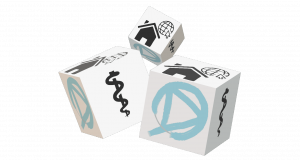
DoMoMEA – Tele-rehabilitation Domiciliary neuroMotor in favor of subjects with cerebral stroke with disability Moderate through Advanced Electronic devices
Website: http://sites.unica.it/domomea-project/
DoMoMEA, at the international level, is the first technological system of home telerehabilitation in favor of patients affected by stroke, who have completed the period of hospitalization. From the research project comes the possibility for the health system to reduce the difficulties due to the achievement of hospital facilities, especially in logistically disadvantaged areas.
DoMoMEA uses a sensor system for quantitative movement analysis during rehabilitative exercise, providing feedback of various types (visual, auditory and vibro-tactile). In this way the patient interacts through an interface on a TV or tablet, with exercises aimed at his disability. Therefore t is possible to customize each program according to the patient’s needs and timing.
The methodologies and resources used in the DoMoMEA project are useful elements for the development of systems in tele-rehabilitation contexts.
Role: DoMoMEA is a Top-Down Cluster project funded by Sardegna Ricerche with POR FESR funds 2014/2020 – PRIORITY AXIS I “SCIENTIFIC RESEARCH, TECHNOLOGICAL DEVELOPMENT AND INNOVATION”.
Scientific Responsible: Danilo Pani, Ph.D. – Researcher in Electronic and Informatic Bioengineering, danilo.pani@diee.unica.it
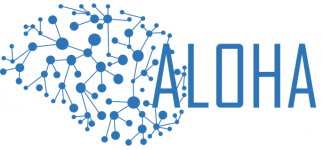 ALOHA – Software framework for runtime – Adaptive and secure deep Learning On Heterogeneous Architectures
ALOHA – Software framework for runtime – Adaptive and secure deep Learning On Heterogeneous Architectures
European Project (Horizon 2020)
Website: http://www.aloha-h2020.eu/
ALOHA is the English acronym for Software framework for runtime – Adaptive and secure deep Learning On Heterogeneous Architectures. The research project’s main goal is to simplify the implementation of Deep Learning algorithms (artificial intelligence) on different low-energy computing platforms.
The main practical implications of ALOHA concern video surveillance, smart industry and bioimaging.
As part of the surveillance of structures in critical areas (for example power plants), the goal is redoucing the time needed to make the identification and tracking algorithms of objects reliable.
In the smart industry, ALOHA would like to enable designers to optimize speech recognition for machine control, with real-time processing even in conditions of noise and reverberation.
Finally, in clinical practice, from the first results of the analysis of images obtained with computed tomography without contrast, the assistance system has recognized cases of intracranial hemorrhage with greater precision than the emergency room physicians.
The ALOHA project is proud of the collaboration with 14 partners from 7 different countries and bases the analysis on the hardware (during the algorithm design phase), the adaptability, the safety and the extensibility of the foreseen tools.
Role: project coordinator
Task: coordination and implementation of hardware accelerators for in-depth learning
Scientific Coordinator: Paolo Meloni, EOLAB – University of Cagliari, paolo.meloni@diee.unica.it
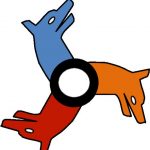
CERBERO – Cross-layer modEl-based fRamework for multi-oBjective dEsign of Reconfigurable systems in uncertain hybrid environments
European Project (Horizon 2020)
Website: http://www.cerbero-h2020.eu/
The CERBERO project has a range of activities that extends in various sectors regarding the creation of hardware and software modules for smart objects, particularly in assisted driving, ocean monitoring and spatial exploration.
Smart traveling
In the use case of smart electric vehicle traveling, the goal is to test and validate the driver support interface developed by the CERBERO 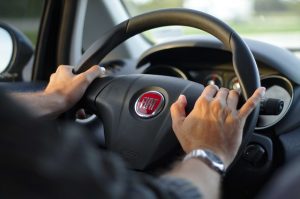 team, interacting with the virtual guidance system developed at the Fiat Research Center (CRF). The latter, therefore, will be enriched with features such as monitoring driver behavior, testing and validating a new support interface.
team, interacting with the virtual guidance system developed at the Fiat Research Center (CRF). The latter, therefore, will be enriched with features such as monitoring driver behavior, testing and validating a new support interface.
The CERBERO support interface integrates the simulation of road conditions, the battery status related to the use and the progress of the route in relation to the charging stations.
In this way human-machine interaction will be possible, enriched by the assistance that a vehicle can provide to the driver, for example by ensuring that the battery has sufficient charge to complete the route.
Self-repairing systems for space exploration

The main goal, in this use case, is to equip the systems for space exploration of self-monitoring and self-repair functionalities.
This is made possible thanks to integrated processing processes. In this way, the project aims to repair breakdowns due to radiation or environmental conditions and downtime.
Robots for monitoring the oceans on the surface and in the seabed
The Ocean Monitoring use case involves the construction of an equipment with sensors capable of producing high resolution images and videos during dives. 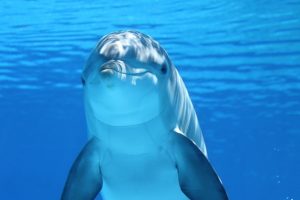 These are “marine eyeballs” through which it is possible to obtain photographic material and live video, connecting via wi-fi to a smartphone or a PC. The marine robots are remote controlled within the range of wireless action but are also designed for self-management of navigation.
These are “marine eyeballs” through which it is possible to obtain photographic material and live video, connecting via wi-fi to a smartphone or a PC. The marine robots are remote controlled within the range of wireless action but are also designed for self-management of navigation.
They will be useful for marine biologists to study fish fauna in places where diving is dangerous but also for monitoring the environmental conditions of the ocean floor and surfaces.
In the CERBERO project there are 11 research institutes published by 7 EU and non-European countries.
Role: project partner
Activity: provide hardware reconfiguration and rapid prototyping
Scientific coordinator: Francesca Palumbo, PhD, IDEA Lab – University of Sassari, fpalumbo@uniss.it
INSIEME – Intelligent Systems for Integrated Health Management



Website: https://www.abinsula.com/en/progettoricerca/8
The project is aimed at creating an integrated network of embedded devices, communicating independently, according to the IoT paradigm, to be used for monitoring and traceability of medical processes in hospitals or healthcare in general.
The use of IoT-type technologies in this area poses very stringent requirements for the infrastructure. First of all, it is necessary that the data taken from the various sensors be exchanged and stored in a secure manner. It is also necessary that the entire platform supports a flexibility of use that allows an efficient exploitation in different operating modes, related, for example, to the location of the device or to the available energy budget. Furthermore, to facilitate the realization of the platform it is necessary that heterogeneous nodes can communicate in a transparent way, and that the collected data are made available for processing on a centralized server, in standard format, in accordance with the regulations concerning the domain of medical devices.
To solve these problems, the project aims to create an integrated software platform to facilitate the exploitation of embedded systems in IoT platforms, improving the performance of the networks with respect to the state of the art. The infrastructure to be developed is based on the extension of an existing embedded architecture to which the project aims to add the following modules:
– Smart connectivity module, which will provide to the embedded devices connected to the platform the features needed to allow both communication between different devices and the exchange of information between devices and remote computing / storage resources.
– Security module, responsible for guaranteeing the protection of the system from intrusions and malicious interventions. A preliminary analysis of possible threats will be carried out using, for example, the STRIDE model in order to identify which prevention and protection mechanisms are necessary to mitigate the consequences of tampering and intrusion attempts.
– Adaptive runtime manager, which will function as an interface between the features developed by the other modules and the underlying levels, and will dynamically manage the adaptation of the system to changes in the performance of the network interface, to different levels of security, to changes in the number of devices connected to the system or to different power and battery management policies.
Scope: Ministry of Economic Development – PON 2014-20 – Asse I – Innovazione, Azione 1.1.3
Reference period: 2017-2020
Role: partner
Contact : Luigi Raffo, full professor, EOLAB – University of Cagliari, raffo@unica.it
NEBIAS – NEurocontrolled BIdirectional Artificial upper limb and hand prosthesiS

European Project
Website: http://www.nebias-project.eu/
The four-year project NEBIAS was launched in 2013 and made it possible to test a new prosthesis of the upper limb. Our laboratory has participated in the project with the realization of the circuitry to build an interface capable of making the neuro-controlled prosthesis perceived by the amputee as the natural one.
From the clinical studies conducted on selected patients, emerges a new interface that can provide a stable and very selective connection with the nervous system. From the union of different branches, mainly microelectronics and materials science, we obtain a system that, starting from the nerves with which the prosthesis interacts, detects the patient’s will to conduct hand movements in a selective way and to respond to the perceived sensation by modulating the intensity of the force.
The next objective is to miniaturize the electronic components that would not make the use of the device possible without the supervision of the research team, find an external supply system suitable for the prosthesis and adapted to the daily needs of the patients; integrate tactile feedback of sensory perceptions such as hot and cold.
Role: project partner
Task: development of implantable electronics for recording/stimulation
Scientific Coordinator: Massimo Barbaro, EOLAB – University of Cagliari, barbaro@unica.it
Biomechatronic hand prostheses endowed with bio-inspired tactile perception, bi-directional neural interfaces and distributed sensori-motor control
 Website: http://handbot.unicampus.it/
Website: http://handbot.unicampus.it/
The aim of the HandBot project is to restore the bi-directional control of a hand prosthesis through the use of invasive neural interfaces that have the dual task of: transmitting the neural signal from the amputee to a recording system that will convert it into motor control for the prosthesis; stimulate the Peripheral Nervous System (SNP) with electrical impulses proportional to the tactile information acquired by the sensor system integrated in the prosthetic hand.
The prosthesis has been interfaced to the Peripheral Nervous System (SNP) through implantable neural electrodes, of the latest generation, for stimulation. The HandBot system will therefore allow direct and natural control of the prosthesis by the user and will allow the subject to perceive tactile sensations of various kinds. In this way it will also be possible to improve the acceptability of the prosthesis by the user expanding the spectrum of the allowed operations.
To achieve the goal, neurophysiological studies have been carried out on the role of tactile perception in sensor-motor control. The results of the experiments carried out on animals and on humans have enabled to understand how tactile stimulation is perceived and processed by the brain.
In order to verify that the sensory system was able to imitate the human’s tactile perception capabilities, a test platform was created that could apply a repeatable stimulus applied to the fingertip of the artificial finger, monitoring the cortical activity by EEG . The results confirmed that the developed biomimetic tactile sensors are able to discriminate fine surface properties and that the coding of stimuli allows correct tactile discrimination both in healthy subjects and in amputated subjects.
During the project a bio-inspired finger was designed and developed to be integrated into the prosthetic hand. High performances for the classification of tactile stimuli through artificial intelligence have been obtained by ensuring that: the kinematic structure and the shape of the fingers replicate the bones and muscles of human fingers; the deformation properties of the skin of the human finger were reproduced through artificial materials created ad hoc; the strategies of neural coding of tactile information by human mechanoreceptors were reproduced through neuronal models of silicone.
In order to understand the aspects related to the biomechanics and the motor control of the grab, various acquisitions of the movements of the upper limb have been performed to simulate not only the behavior of the human limb but also of some robotic and prosthetic hands, so as to be able to be used to develop and test prosthetic limb control.
In order to validate and optimize the control algorithms developed on the basis of human studies, a robotic arm-hand platform was used. The experiments carried out on this robotic platform have provided clear evidence of the advantages deriving from the HandBot system for the control of a wide variety of gripping and handling tasks, including critical situations, such as the sliding of an object during grasping, or very complex , like fine manipulation based on the necessary digital grabs, for example, to unscrew the cap of a bottle.
Scope: SCIENTIFIC RESEARCH PROGRAMS OF RELEVANT NATIONAL INTEREST
Reference period: 2010-2011
Role: partner
Contact : Massimo Barbaro, associate professor, EOLAB – University of Cagliari, barbaro@unica.it
NInFEA – Design and development of advanced algorithms for real-time extraction of fetal electrocardiogram from non-invasive biopotential measures
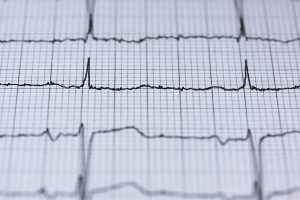 The general objective of the NINFEA project is part of biomedical engineering, and aims at identifying an engineering solution (in this case an electronic and information solution) to a problem of biomedical interest (in this case prenatal cardiological diagnosis ).
The general objective of the NINFEA project is part of biomedical engineering, and aims at identifying an engineering solution (in this case an electronic and information solution) to a problem of biomedical interest (in this case prenatal cardiological diagnosis ).
Despite the extraction of the ECG of the fetus through non-invasive biopotential measures was not a new research topic, the NINFEA project was inserted in a context in which no really effective solutions existed either in scientific literature or on an industrial level. The highlighted need, from which derives the main innovation of the project, is to allow the morphological analysis of the fetal ECG signal, as well as the extraction of the heart rate, which was already possible to obtain.
The objective of creating a database useful for research, through the detection of signals by in vivo through the application of cutaneous electrodes on voluntary pregnant women, was partially achieved. This means that on the basis of the protocol developed and the instrumentation approved for experimentation, it was not possible to perform some operations on the signal during acquisition of the same: these must be performed in a short time a few seconds from the acquisition.
To this end, a Matlab tool was developed that allows, through a simple graphical interface, to manage different processing (off-line) on raw signals, thus ensuring greater practicality in hospital measurements.
During the NINFEA project, innovative algorithms were developed able to extract the weak fetal signal from the mixtures of interfering signals of higher entity detectable to the electrodes (ECG, EMG, maternal respiration, electrical and instrumental interferences). These algorithms include features of both engineering and clinical interest (signal enhancement, denoising, event detection, waveform delineation …).
70 measurements were taken on 16 pregnant women at different gestational ages (recruitment on 140 pregnant women, 40 enrolled but only 16 granted at the end to perform the measurement) with results in most cases not suitable for clinical use of fetal signals . Therefore, within the limits due to the number of signals acquired and their quality, it was possible to evaluate – with the help of national and international collaborations promoted by the proponent – the effectiveness of the proposed solutions compared to survey techniques based on fetal echocardiography adopted in the clinical practice.
The limits and potentials of algorithmic and architectural solutions able to perform the extraction in real time were also assessed, in order to lay the foundations for the future development of electro-medical devices based on the above principles usable in the clinical field.
The NINFEA project has contributed to scientific dissemination at the international level and to create the potential for a successful basic research to lead to greater interest in the topic with the forward-looking objective of trying to develop a true diagnostic device. Added to this is the development of expertise on the regional territory.
In the long term, from a diagnostic point of view, with respect to echocardiographic techniques, the project techniques could guarantee a simple and objective non-invasive electrical detection even of long tracks. Moreover they are more easily adaptable to a telemedicine context and would allow a wider screening to be implemented also towards subjects without risk conditions.
The development of diagnostic knowledge and tools in this field would lead to some significant advances in prenatal diagnostics, useful for identifying in a simple way more or less severe arrhythmic forms in order to allow in utero treatment or delivery planning, with consequences positive both in terms of the health of the unborn child and in terms of psychological effect on the parents.
PI: Danilo Pani, PhD, University of Cagliari, pani@diee.unica.it
Scope: NOTICE: RESEARCH BAGS INTENDED FOR YOUNG RESEARCHERS, Regional Law No. 7 of 7 August 2007
Reference period: Feb 2009 – Dec 2011
EOLAB role: unique proposer
HEREiAM – An interoperable platform for self care, social networking and managing of daily activities at home
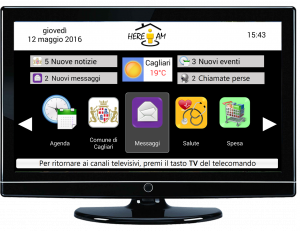
Website: http://www.hereiamproject.org
HEREiAM is a new hardware/software ICT structure that combines the ease of use of TV with the potential of broadband internet services, it allows you to monitor vital parameters, communicate with loved ones and with doctors and keep track of the agenda for taking drugs.
HEREiAM, in fact, sends reminders, connects to the smartphone of those who take care of the health status of the elderly, provides information on how to measure pressure and blood sugar and also allows you to order the expenditure directly using the remote control.
The platform is based on different hardware components:
• Android custom set-top box
• Personal smart card
• TV with HDMI
• personalized remote control
• satellite dish (useful where there is no broadband connection)
• external devices (glucometer, scale, etc.)
The set-top box, the heart of the system, of useful and integrative features such as webcam, microSD card reader, Ethernet port, Wi-Fi and Bluetooth, and to it connect, via USB, external devices. It is connected to the HDMI TV port, allowing users to access the system autonomously by inserting the smart card, avoiding procedures for filling out forms. The remote control is the only device necessary to interact with the normal operation of the TV and the platform.
The primary objective is to enable older people – people aged 60 or over – a better and more lasting self-sufficiency by providing an easy-to-use tool. According to the statistics, the potential users of this service, by 2050, will be 21.1% of the world population, which is equivalent to about two billion people.
With the increase in life expectancy, health spending also increases and the need for greater accessibility to tools to monitor their health status. HEREiAM proposes a simplification in the healthcare sector where there is no technological literacy, often due to the lack of use of virtual infrastructures or their absence.
The target was identified through demographic studies also linked to the lifestyle of three countries: Italy, Holland and Belgium. The advantages have also been identified in the size of the screen that allows its use with greater visibility, and in the social dimension given by the possibility of communicating.
Particular emphasis also on the problem of privacy: many elderly people, in fact, do not like using of video cameras for monitoring. In the case of HEREiAM, proximity sensors are used that can detect the presence of the elderly in a given environment and its mobility.
Scope: Project co-funded by the AAL Joint Program (Ref. AAL-2012-5-064) and the National Authorities and R&D programs in Italy, Belgium, Romania and The Netherlands.
Role: Project coordinator
Task: Development of the hardware and software tools operating at home, organization of the field trial in Cagliari (Italy), analysis of the results.
Scientific coordinator: Luigi Raffo, EOLAB – Università di Cagliari, raffo@unica.it
RE.MO.TO – Movement Recovery and Telemonitoring for rheumatology patients with hand disabilities
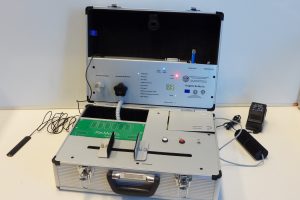 The RE.MO.TO project implements an e-health solution for remote telemonitoring of rehabilitation therapy in the course of rheumatoid arthritis and systemic sclerosis.
The RE.MO.TO project implements an e-health solution for remote telemonitoring of rehabilitation therapy in the course of rheumatoid arthritis and systemic sclerosis.
The platform is based on sensor-assisted devices integrated into the battery-powered tele-home-care device, specifically designed for the project and through which the home patient can carry out the preconfigured exercises.
The system also provides a valid training support to the patient and transmits the data directly to the doctor, who can obtain a quantitative and qualitative report of the therapy through a software interface. The patient ID is the IMSI code of the SIM installed on the device: through this parameter, the doctor can trace back to the patient without sending personal data.
RE.MO.TO allows you to develop customized solutions in relation to the patient’s status, can be used safely both at home and in the clinic, under the supervision of the doctor. The ease of use allows the patient to be motivated in therapy, reducing cases of neglect due to lack of follow-up. At the state of the art there are no rehabilitative aids that have similar functional and non-functional characteristics.
The project also solves the difficulties of access to the NHS if the hospital facilities are difficult to reach from a logistical point of view, creating a platform that guarantees, through the internet connection, the monitoring of how the exercises are performed.
In addition to demonstrating the clinical efficacy of this implementation, RE.MO.TO offers numerous development perspectives in the field of telemedicine and rehabilitative approaches. For the hardware / software platform developed, a patent application has been filed, which in its development constitutes a new starting point for introducing different types of exercises and encouraging their application in other rehabilitation contexts.
Reference period: 2010- December 2012
Scientific coordinator in EOLAB:
Role: Partner
AMBROSIA: Platform for the electronic bio-detection of telomerase expression
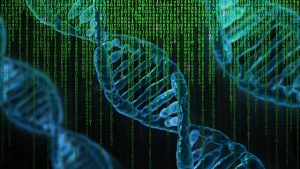 Website: http://sites.unica.it/ambrosia/
Website: http://sites.unica.it/ambrosia/
The AMBROSIA project has developed a technological platform based on a new class of miniaturized electronic biosensors able to measure the activity of telomerase. The latter is a key enzyme involved in preserving the pluripotentiality of stem cell diversification. Cell aging processes cause a considerable decrease in the stem cell differentiation capacity into different cell types.
The final result of the project showed how it is possible to measure, by means of a device made of organic technology, the presence of a sequence of telomeric DNA of different length.
The telomerase activity was measured by the quantification of telomere elongation (induced by telomerase) through the development of a mixed, electronic and fluidic system. The latter has enabled to convey all the samples, reagents and chemical species involved in the reaction on the electrode surface. The speed of telomere lengthening is therefore an index of the expression of the enzyme, in terms of quantity of electric charge associated with DNA strands.
The sensors used have been made in organic electronics, at very low costs and by means of suitable ink-jet printers, particularly useful for obtaining disposable instruments, suitable for clinical trials.
In collaboration with the DIMCM research unit, a hybrid surface consisting of gold and DNA strands was created, suitable for the sensing of the telomerase enzyme.
The sensor allows to perform a direct signal transduction based on the length of the telomeric chains. If the device is used to monitor in real time the activity of the enzyme, the sensor produces a variation of the output signal proportional to the elongation of the telomeric chains immobilized on the sensitive area. The variation of the threshold voltage of the device is compared with the variation of the threshold voltage of a set of control devices.
In addition to the transduction platform, a methodology was developed for the immobilization of telomeric DNA on the active surface of the biosensor, adapted to the technology used. Telomerase is in fact a fairly large molecule and, if the telomeric DNA strands are too compact, the proper functioning of the elongation process can be inhibited.
The advantages of this approach compared to commercial alternatives are related to the possibility of performing experiments using much smaller quantities of reagents (tens of μL), in an automated way and with waiting times reduced to a minimum.
The interest of scientific research towards regenerative medicine and cell therapy is constantly growing. Visualizing the living system as an electromagnetic entity emphasizes the presence of endogenous electrical and magnetic signals which are indicative of the levels of organization of living systems and which are directly related to biological functions such as the development, growth and repair of tissues.
Therefore, from a therapeutic point of view, the platform developed in the AMBROSIA project is applicable in the diagnosis of degenerative diseases caused by senescence of adult stem cells. Another important field of application is the diagnosis and treatment of a large number of patients with cancer, studying new drugs and active ingredients that can attack cancer cells by inhibiting the activity of telomerase.
Role: partner
Scope: REGIONAL LAW 7 AUGUST 2007, N. 7 – PROMOTION OF SCIENTIFIC RESEARCH AND TECHNOLOGICAL INNOVATION IN SARDINIA
Reference period: 2012-2016
Scientific responsible: prof. Massimo Barbaro, associate professor, University of Cagliari, barbaro@unica.it
ELoRA – Low-power Real-time processing of neural signals for prosthetic aids
The EloRA project presents as an innovative focus the real-time decoding of neural signals detected by the peripheral nervous system and sent in input to an active robotic prosthesis. The main application explored during the project is related to upper limb neuroprosthetics (in particular hand prostheses), in which the signal is extracted directly from the residual nerves of the amputee, through TIME (Transverse Intrafascicular Multichannel Electrode) electrodes.
Directly analyzing the modulation signal of motor activity transported by the peripheral nervous system, allows to control a high number of degrees of freedom in a more natural way compared to electromyographically controlled solutions.
At the beginning state of art, the main difficulty was to combine the need for real time, computational complexity of the algorithms and power of the embedded platforms. To achieve an efficient and effective solution, EloRA has combined bioengineering skills in signal processing with microelectronic skills, developing a system in which each processing element is specialized in performing a computational task in parallel.
Having achieved the general objective of the project, EloRA has developed a multidisciplinary approach in the analysis of biomedical signals and implementation of custom multicore architectures with low power dissipation, laying the foundations for use also in prosthetic applications different from those implemented.
Call for proposals: Fundamental research projects or basic annuity 2012 – Regional Law 7 August 2007, no. 7
Reference period: Feb 2009 – Dec 2011
Role: Coordinator
PI: Danilo Pani, Ph.D. – Researcher in Electronic and Informatic Bioengineering, danilo.pani@diee.unica.it
FetalHeart – Algorithms for non-invasive extraction of the fetal electrocardiogram
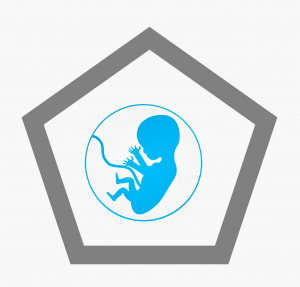 The fundamental goal of FetalHeart is the development of algorithms for the non-invasive extraction of the fetal electrocardiogram.
The fundamental goal of FetalHeart is the development of algorithms for the non-invasive extraction of the fetal electrocardiogram.
A starting point is a scenario in which there are invasive solutions – applicable only during labor – and non-invasive solutions, which do not allow to analyze the morphology of the signal as they are based on ultrasound technology.
The main problem related to the target is to be able to provide techniques that allow to perform a prenatal screeneng through the fetal ECG, aimed particularly at women who have risk factors such as congenital heart disease or familiarity with them.
The optimal gestation period goes from the 22nd week onwards, in order to allow the recording of a signal that is not affected by the small size of the fetal heart and allows timely intervention with the eventual administration of placental drugs.
The target can be extended even in the absence of such factors, as a non-invasive and inexpensive detection and screeneng tool.
Key points and objectives are identified:
- in the collection of signals obtained by applying electrodes on the pregnant women’s abdomen at different times of pregnancy, solving the problem of the lack of validation and support data;
- in the fetal electrocardiogram extraction in real time and characterized by valid quality from the clinical point of view;
- in the evaluation of the feasibility of a high performance embedded hardware system, able to realize what was proposed.
The solutions proposed by the development of algorithms able to separate the ECG signal of the fetus from the maternal one and the noise, optimizing the positioning of the electrodes, represent an important step towards the creation of innovative non-invasive diagnostic tools for fetal non-invasive monitoring childbirth.
Typology: EXPERIMENTATION PROJECTS AND TECHNOLOGICAL TRANSFER FOR BUSINESS DISTRICTS OR CLUSTERS – Distretto Sardegna ICT – POR SARDEGNA
2000-2006 MEASURE 3.13 – Research and technological development in enterprises e territory.
Reference period: Dec 2008 – Feb 2009
Scientific Responsible: Luigi Raffo, EOLAB – University of Cagliari, raffo@unica.it
PI: Danilo Pani, Ph.D. – Researcher in Electronic and Informatic Bioengineering, danilo.pani@diee.unica.it
Role: Proponent/Coordinator
MADNESS – Methods for predictAble Design of heterogeNeous Embedded System with adaptivity and reliability Support
 Website: http://www.madnessproject.org/about/
Website: http://www.madnessproject.org/about/
Scope: European Project (FP7)
Abstract: The main goal of the project is to define innovative methodologies for system-level design, able to guide designers and researchers to the optimal composition of embedded MPSoC architecture, according to the requirements and the features of a given target application field. The proposed approach tackle the new challenges, related to both architecture and design methodologies, arising with the technology scaling, the system reliability and the ever-growing computational needs of modern applications.
The proposed methodologies extend the classic concept of design space exploration to:
- Improve design predictability, bridging the so called “implementation gap”, i.e. the gap between the results that can be predicted during the system-level design phase and those eventually obtained after the on-silicon implementation.
- Consider, in addition to traditional metrics (such as cost, performance and power consumption), continued availability of service, taking into account fault resilience as one of the optimization factors to be satisfied.
- Support adaptive runtime management of the architecture, considering, while tailoring the architecture, new metrics posed by novel dynamic strategies and advanced support for communication issues that have been defined.
The project proposes an extended system-level design space exploration approach. The DSE is seen as an iterative process operating on a library of heterogeneous IP cores, exposing a large number of degrees of freedom, as typical for industrial-strength components.
In order to improve the design predictability, the project will introduce a specific layer for rapid and accurate emulation, to be exploited for architectural evaluation inside the DSE process. In detail, it will allow to take into account, during system-level decision phase, the impact of the variables related with a prospective physical implementation of the architecture (e.g. wiring capacitances and delay, 2D floorplanning). Moreover, this layer will provide the capability of performing, when needed during the optimization process, a detailed estimation of the performance and the power consumption of a candidate architecture, relying on an FPGA-based environment for on-hardware prototyping. The power consumption evaluation will be obtained annotating the FPGA emulation results with energy values estimated in a “technology-aware” manner.
Role: Project coordinator
Task: Development of the FPGAbased platform for rapid emulation.
RPCT – Reconfigurable Platform Composer Tool
 Website: http://sites.unica.it/rpct/
Website: http://sites.unica.it/rpct/
RPCT, the Reconfigurable Platform Composer Tool, is an automatic framework, based on the RVC, for the design and optimization of heterogeneous, reconfigurable and low-power HW platforms. The last feature is very important for the mobile platforms sector, more and more oriented towards entertainment rather than simple communication, presenting scenarios not covered by the original idea of the RVC.
Digital technologies applied to multimedia or Digital Media Technologies (DMT) represent today one of the most important research fields of the ICT sector. They have led to the development of complex systems of creation and use of audio/video/image content that pervade the consumer electronics market. Sardinia has been a pioneer of some revolutions related to this field, such as digital terrestrial television (DVB-T), able to combine interactivity with television viewing.
To continue to play an important role in ICT and DMT, however, it is necessary to continue to face major challenges, such as the development of hardware platforms (HW) supporting DMT in the consumer sector. This means adapting the complexity and heterogeneity of multimedia applications to the hardware platforms on which they are installed.
The misalignment of hardware and software performance, in fact, leads to the inefficiency of resources. The adoption of a common formalism and a common language, from which it is opportune to deduce both specific HW and software (SW) (eg parallelism, competition, etc.), would allow SW developers to model the performance of applications according to the HW, long before it is physically available, through an estimate of the costs/benefits of the various possible platforms. At the same time, HW architects could define the optimal architecture with respect to the specifications of the SW.
MPEG has created a set of standards for the encoded representation of moving images, their compression, transmission over digital networks and storage on media such as CDs and DVDs, using the paradigm of interoperability, reusability and flexibility. In this direction, the Moving Pictures Experts Group (MPEG) Reconfigurable Video Coding (RVC) framework was created to provide the formalism to be adopted in the development of codecs (sofware to digitally encode and digitally decode the analog signal).
Capturing new trends adapting them to the needs is strategic in the design of complex systems. RPCT, using the formalism of the MPEG standards, related to Reconfigurable Video Coding (RVC), aims to represent the applications in terms of networks of functional units described through high-level dataflow models, based on actors, representing different functional units (FU), with the aim of bridging the gap that traditionally exists at the design level between HW and software (SW).
In this way it is possible to accelerate the development of both HW and SW codecs.The RVC framework, before RPCT, was used only to determine the specifications of a single codec at a time, while, with RPCT, multi-application systems are automatically generated. RPCT is also power- and area-aware, optimizing integrated resources, sharing common ones and inactivating those not in use.
The RPCT project was part of the field, just when MPEG promoted the expansion of the RVC framework, proposing a new application in the mobile field, promoting Sardinia as a territory of innovation.
Scientific coordinator: Luigi Raffo, full professor, University of Cagliari, raffo@unica.it
Role: Project coordinator
Task: Development of the reconfigurable platform
Scope: Project funded by regional government of Sardinia
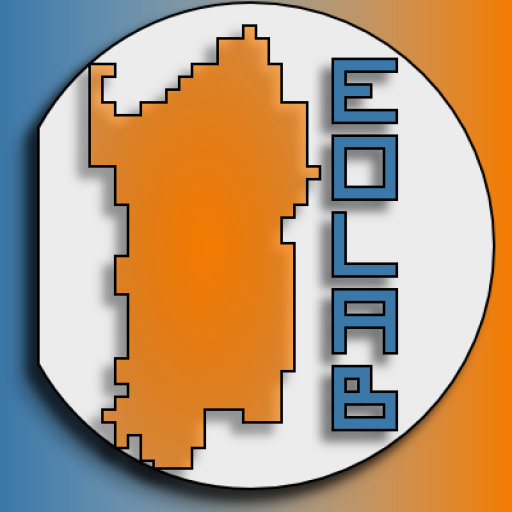

 TURNTABLE – Platform supporting vitality and abilities of elderly
TURNTABLE – Platform supporting vitality and abilities of elderly







 team, interacting with the virtual guidance system developed at the Fiat Research Center (CRF). The latter, therefore, will be enriched with features such as monitoring driver behavior, testing and validating a new support interface.
team, interacting with the virtual guidance system developed at the Fiat Research Center (CRF). The latter, therefore, will be enriched with features such as monitoring driver behavior, testing and validating a new support interface.





 Website:
Website:  The general objective of the NINFEA project is part of biomedical engineering, and aims at identifying an engineering solution (in this case an electronic and information solution) to a problem of biomedical interest (in this case prenatal cardiological diagnosis ).
The general objective of the NINFEA project is part of biomedical engineering, and aims at identifying an engineering solution (in this case an electronic and information solution) to a problem of biomedical interest (in this case prenatal cardiological diagnosis ). 

 Website:
Website: 
 Website:
Website:  Website:
Website: 
